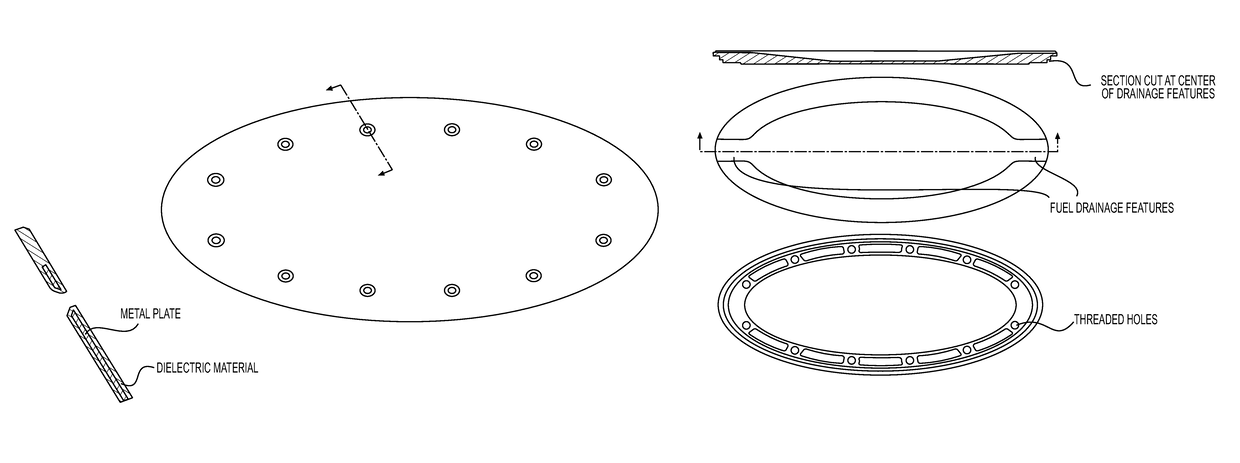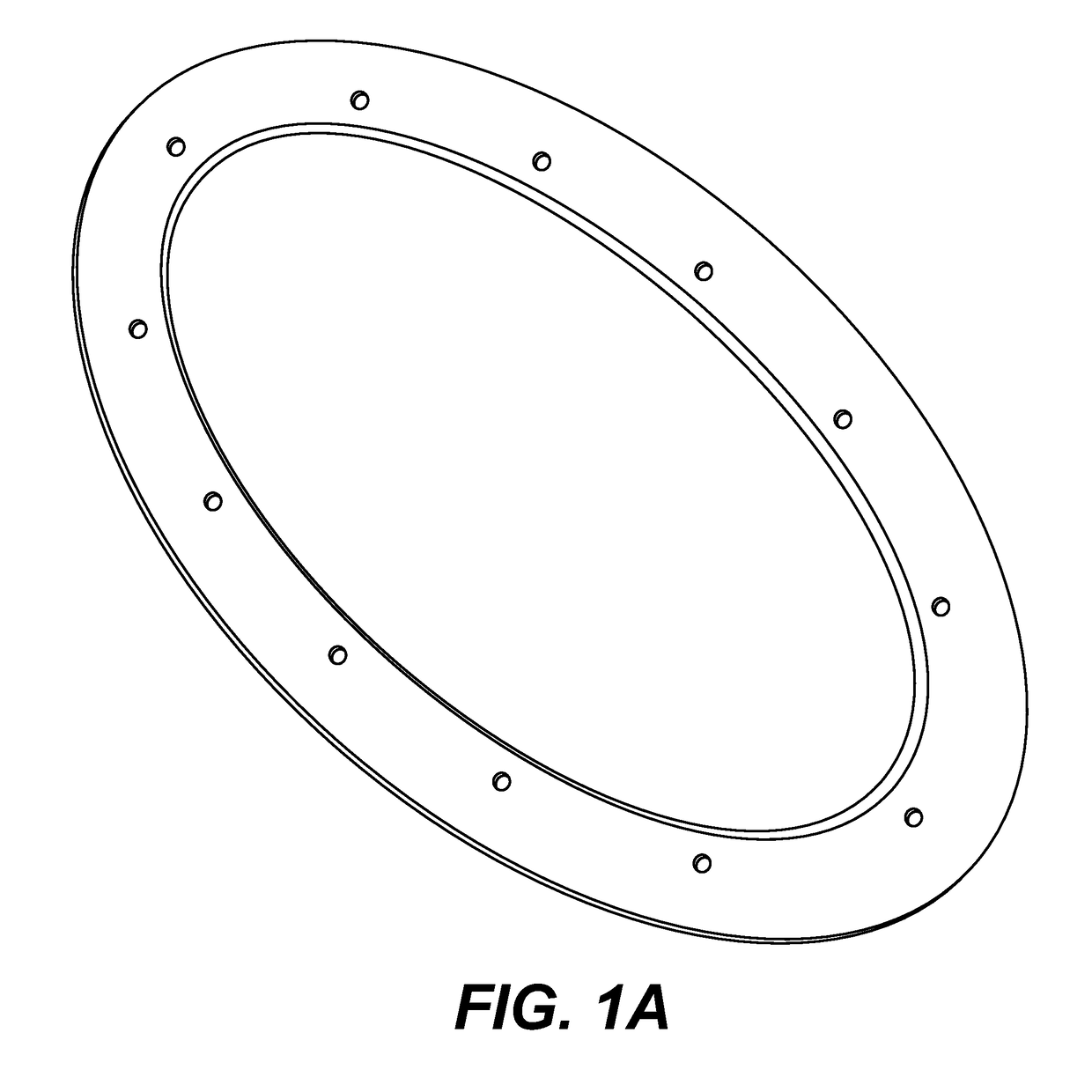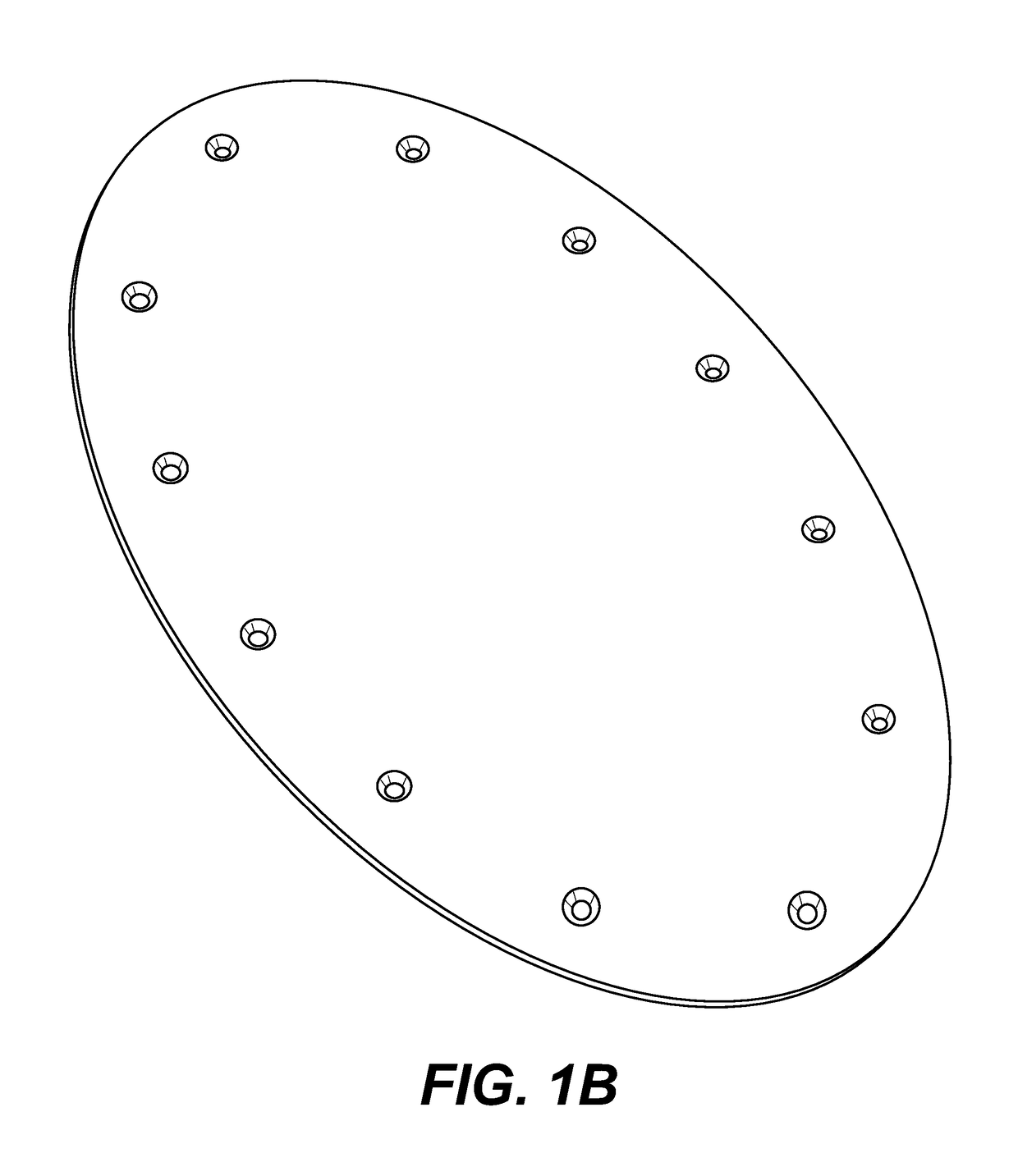Fuel tank access door systems and methods
a technology for accessing doors and fuel tanks, which is applied in the direction of fuel tank safety measures, aircraft accessories, aircraft lighting protectors, etc., can solve problems such as corrosion between the wing and the access door surface, and achieve the effects of reducing maintenance costs, simplifying installation, and improving safety
- Summary
- Abstract
- Description
- Claims
- Application Information
AI Technical Summary
Benefits of technology
Problems solved by technology
Method used
Image
Examples
Embodiment Construction
[0025]In general, the terms and phrases used herein have their art-recognized meaning, which can be found by reference to standard texts, journal references and contexts known to those skilled in the art. The following definitions are provided to clarify their specific use in the context of this description.
[0026]As used herein, “top” and “bottom” surfaces of fuel tank access doors are described relative to the upright aircraft orientation. Thus, the top surface of the inner fuel tank door, which faces the inside of a fuel tank, forms the top of the fuel tank access door stack and the bottom surface of the outer fuel tank door, which faces outside the aircraft, forms the bottom of the fuel tank access door stack.
[0027]A “system” is a combination of components operably connected to produce one or more desired functions. A “component” is used broadly to refer to an individual part of a system.
[0028]“Encapsulated” refers to the orientation of one structure such that it is at least part...
PUM
 Login to View More
Login to View More Abstract
Description
Claims
Application Information
 Login to View More
Login to View More - R&D
- Intellectual Property
- Life Sciences
- Materials
- Tech Scout
- Unparalleled Data Quality
- Higher Quality Content
- 60% Fewer Hallucinations
Browse by: Latest US Patents, China's latest patents, Technical Efficacy Thesaurus, Application Domain, Technology Topic, Popular Technical Reports.
© 2025 PatSnap. All rights reserved.Legal|Privacy policy|Modern Slavery Act Transparency Statement|Sitemap|About US| Contact US: help@patsnap.com



